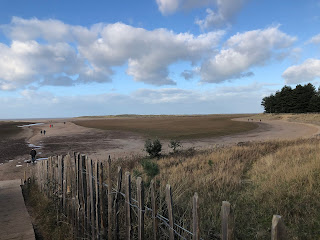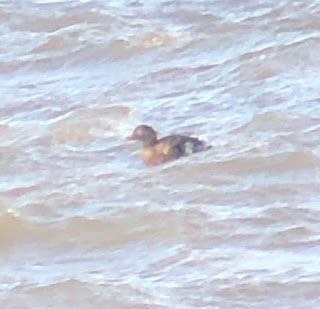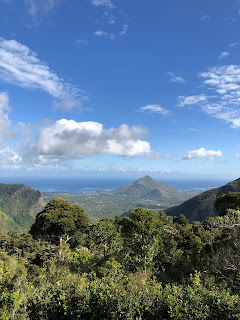Birding Weekend in Norfolk: Part 2
We ventured as far east as Wells, where a quick stop at the fields west of the town failed to produce the hoped-for Rough-Legged Buzzard. This was likely because I didn’t put in as much time as was necessary to see the bird, as my mum and sister were waiting in the car. However, I was hoping the fields with the bird in to be viewable from the roadside. Instead, a wide track runs north from the road through the fields for around 1km with fields either side – a large area to cover with limited time and something worth noting if you are planning to look for the bird. Of course, you could get lucky and have it by the road I’m sure.
At this point, my mum and sister headed for Burnham Market and dropped my dad and I at the north end of Lady Anne’s Drive on the way. We walked North along the boardwalk and down into Holkham Gap to look in particular or Shorelark. This area is daunting to the newcomer (something I found when I saw the larks here last year) and the birds range widely along the whole length of the dunes from Wells to Burnham Overy, not helped by the huge number of dogs to flush them up. The Shorelark had been seen 1.6km west of the Gap earlier in the day so hopes were low. Walking east from the end of the boardwalk along the obvious wide track, you come to the south-west corner of the roped off area where the birds are most often seen. We had found a large flock of Meadow Pipit and Linnet but little else and decided to spend time seawatching from the dunes directly north of the roped off area. Here, we saw a huge Common Scoter raft of several thousand birds and observed the impressive sight as they all took off and flew west. I was watching a constant stream of scoter passing through my scope view for many minutes, which gave me a perfect opportunity to search for the white wing bars of any Velvet Scoter among them. Unfortunately, none were found leaving me to possibly think they did not take flight with the Common Scoters. The sea was far too far out and choppy to see birds resting on the sea at anything more than middle distance. We did find several nice Long-tailed Duck close in and another duck which I have concluded must also be a Long-tailed Duck in a plumage I am not familiar with.
Mystery duck species: I concluded Long-tailed Duck due to the profile and jizz
At this point it was getting late and with no sign of the larks, we needed to head back. Suddenly, my dad spotted a gentleman on the far side of the roped-off area, taking pictures of something. I followed his eyeline with my scope and sure enough there were 5 Shorelark right in the centre of the roped-off area – the dunes gave the perfect aerial vantage point as they moved through the grass and we enjoyed distant but clear views.
Two minutes later, the same man had his camera trained elsewhere – this time on a flock of 60 Snow Bunting! Which took off suddenly and flew directly towards us, low overhead and landing on the beach just a few metres away from us! Both targets in quick succession! Whoever that man with the camera was, I am very grateful!
We headed back to Titchwell jubilant, but the day had two final exciting additions. Arriving in the visitor centre we were put on to a Barn Owl hunting the fields by the A149, viewable from the base of the West Bank Path and, even better, the Woodcock had decided to become active in the quickly-fading light and gave fantastic views a few feet from the boardwalk.
This was my first Woodcock on the ground and was a fantastic end to the day.
This was my first Woodcock on the ground and was a fantastic end to the day.
As the light disappeared, we added little else on the rest of the reserve but soaked in the evening Titchwell experience, especially the harrier roost once again, with around 30 birds in the air over the reedbed at once.
The next morning, we had to leave quite quickly – but we did have time for a short diversion on the way home to take in the now-famous Alaskan Yellow Wagtail at Sedgeford. When we arrived at about 10:00 around 10 birders were already on site (I’d be interested to know how many birders have been to see this bird given its convenient location on the way to North Norfolk and its continual reporting rate). We were told it had just disappeared out of sight and we had a nervous race between the bird deciding to show and time getting on. Eventually, it reappeared around the side of the dung heap and gave great views. Even in the dull conditions, the blue and yellow were very striking and it was a very nice-looking bird. After a few minutes, it flew off, giving its diagnostic call as it went – fantastic!
I found the directions on BirdGuides to this bird somewhat misleading. It had been reported that morning with a location tag (as on many other days) some distance east of the road. The bird was actually on the dung heap immediately on the west side of the road just north of Shaw Farm - opposite the minor road heading towards the Birdguides location tag. I’m not sure whether this is always the case or whether the bird commutes between several dung heaps, but I do know that on this occasion I saw it on the dung heap on the west side of the road, yet it continued to be reported on BirdGuides some distance east of the road. This may be worth noting if going to see the bird.







Comments
Post a Comment